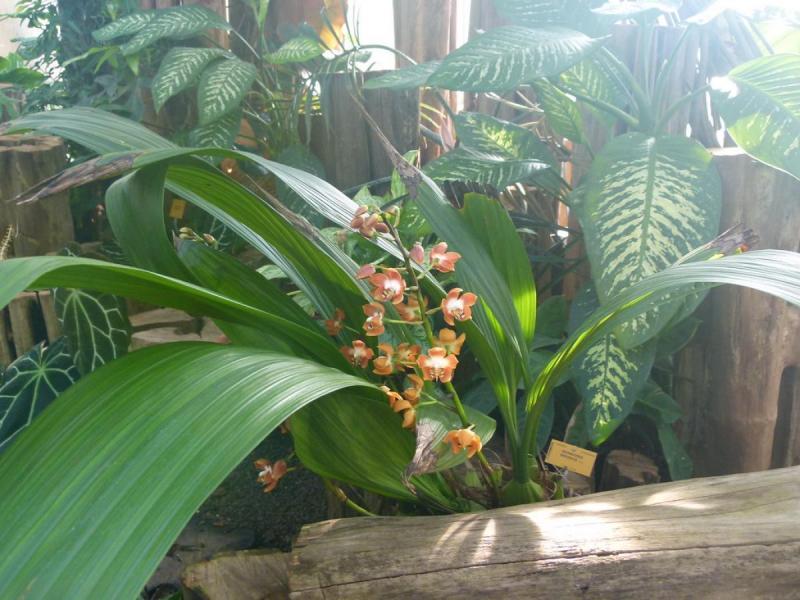Neomoorea wallisii
Also known as: Neomoorea irrorata Moorea irrorata in the subfamily: Epidendroideae
Native to: Antioquia - Colombia Departamento del Huila - Colombia Panama
General Information
Neomoorea wallisii is a medium sized cool to warm growing epiphytic or terrestrial orchid belonging to the sub family Epidendroideae native to Colombia and Panama.
Plant Description
Grows to 50-85cm. Each new growth has numerous leathery thick, rigid, elliptic, lance shaped leaves that grow to 15-75cm long. Pseudobulbs grow to 2.5-12cm
Flowers
Numerous fragrant blossoms appear
Fragrance
The orchid is fragrant.
Substrate(s)
- Medium
- Fine
- Bark
- Charcoal
- Spaghnum Moss
- Perlite
- Sand
Care Notes
These orchids like to be kept on the dry side, but may need to be watered daily during warm weather, and prefer a well draining mix or also do well mounted, provided they can be watered regularly.
These are quite a forgiving orchid, there are no special requirements to get this orchid to flower, just good care and consistent conditions. Larger plants may be more fussy and can react poorly to change; a poorly timed repotting, a pest infection or an unusually hot day can set them back for a couple of years. However, even plants that have been treated poorly can thrive, and if they are set back they often recover much stronger then they would otherwise be.
Fragrant:- IsFragrant
Climate
Grows at low to high elevations. Rainfall ranges from 33mm to 333mm per day, heaviest in November and lightest in March. Humidity ranges from 81% to 87%, highest in June and lowest in November. Temperature ranges from 16C to 25C, highest in August (18C to 25C) and lowest in January (16C to 23C).
Fertiliser
Apply liquid based fertiliser per recommended directions. They can benefit from a high phosphate fertiliser leading up to flowering season, followed by a high nitrogen fertiliser when new growth appears, and a balanced fertiliser in other times. These orchids can also tolerate slow release fertiliser applied 1-2 pellets per cup (250ml) of media.
Apply fertiliser regularly at half strength year round. Use a high Nitrogen fertiliser during Spring and Summer. Use a high Phosphorous fertiliser during Summer.Potting
This orchid prefers a fine, well draining media. Avoid commercial potting mixes as they may have 'wetting agents' that retain water for too long. A simple mix made up of 20% sand, 50% peat or moss, with the remaining 30% made up of decomposed bark and leaf litter would be adequate. Adding some charcoal to the mix will also help it last longer.
Repotting depends on how wet the media is usually. Every 2-3 years would suffice, or whenever the media shows signs of clumping, staying wet for too long, or smells foul.







